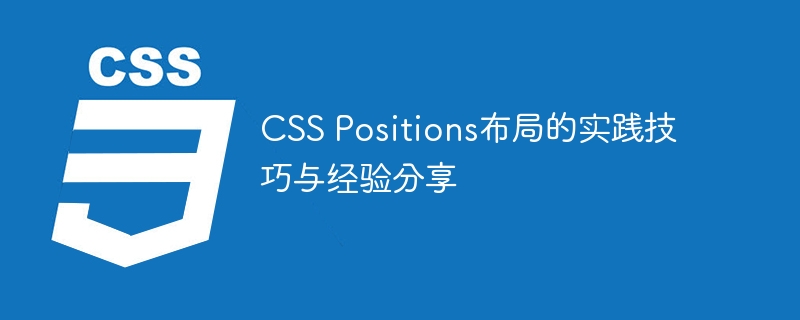

Practical skills and experience sharing of CSS Positions layout
CSS layout is one of the essential skills for front-end engineers, among which the position attribute is an important tool to achieve complex layout. In this article, I will share some practical tips and experiences with CSS Positions layout and provide specific code examples.
1. Introduction to position attribute
In CSS, the position attribute is used to specify the positioning method of elements. Common values are: static, relative, absolute and fixed.
2. Practical skills and experience sharing
<div class="container"> <div class="centered-element">我是居中的元素</div> </div>
.container {
position: relative;
}
.centered-element {
position: absolute;
top: 50%;
left: 50%;
transform: translate(-50%, -50%);
}<nav class="fixed-navbar">
<ul>
<li>首页</li>
<li>产品</li>
<li>关于我们</li>
<li>联系我们</li>
</ul>
</nav>.fixed-navbar {
position: fixed;
top: 0;
left: 0;
width: 100%;
background-color: #fff;
box-shadow: 0 0 5px rgba(0, 0, 0, 0.2);
z-index: 9999;
}
.fixed-navbar ul {
display: flex;
justify-content: center;
list-style-type: none;
padding: 0;
margin: 0;
}
.fixed-navbar ul li {
margin: 0 20px;
}<div class="waterfall-layout"> <img src="image.jpg" alt="图片1"> <img src="image.jpg" alt="图片2"> <img src="image.jpg" alt="图片3"> <img src="image.jpg" alt="图片4"> <img src="image.jpg" alt="图片5"> </div>
.waterfall-layout {
position: relative;
column-count: 3;
column-gap: 10px;
}
.waterfall-layout img {
width: 100%;
position: relative;
display: block;
margin-bottom: 10px;
}
.waterfall-layout img:nth-child(odd) {
position: absolute;
left: 0;
margin-bottom: 0;
}
.waterfall-layout img:nth-child(even) {
position: absolute;
right: 0;
margin-bottom: 0;
}The above are some practical skills and experience sharing of CSS Positions layout. I hope it will be helpful to your actual project. When using the position attribute, please choose an appropriate value according to the specific situation and adjust it in combination with other attributes. By using CSS layout flexibly, you will be able to create unique web pages.
The above is the detailed content of Practical skills and experience sharing of CSS Positions layout. For more information, please follow other related articles on the PHP Chinese website!